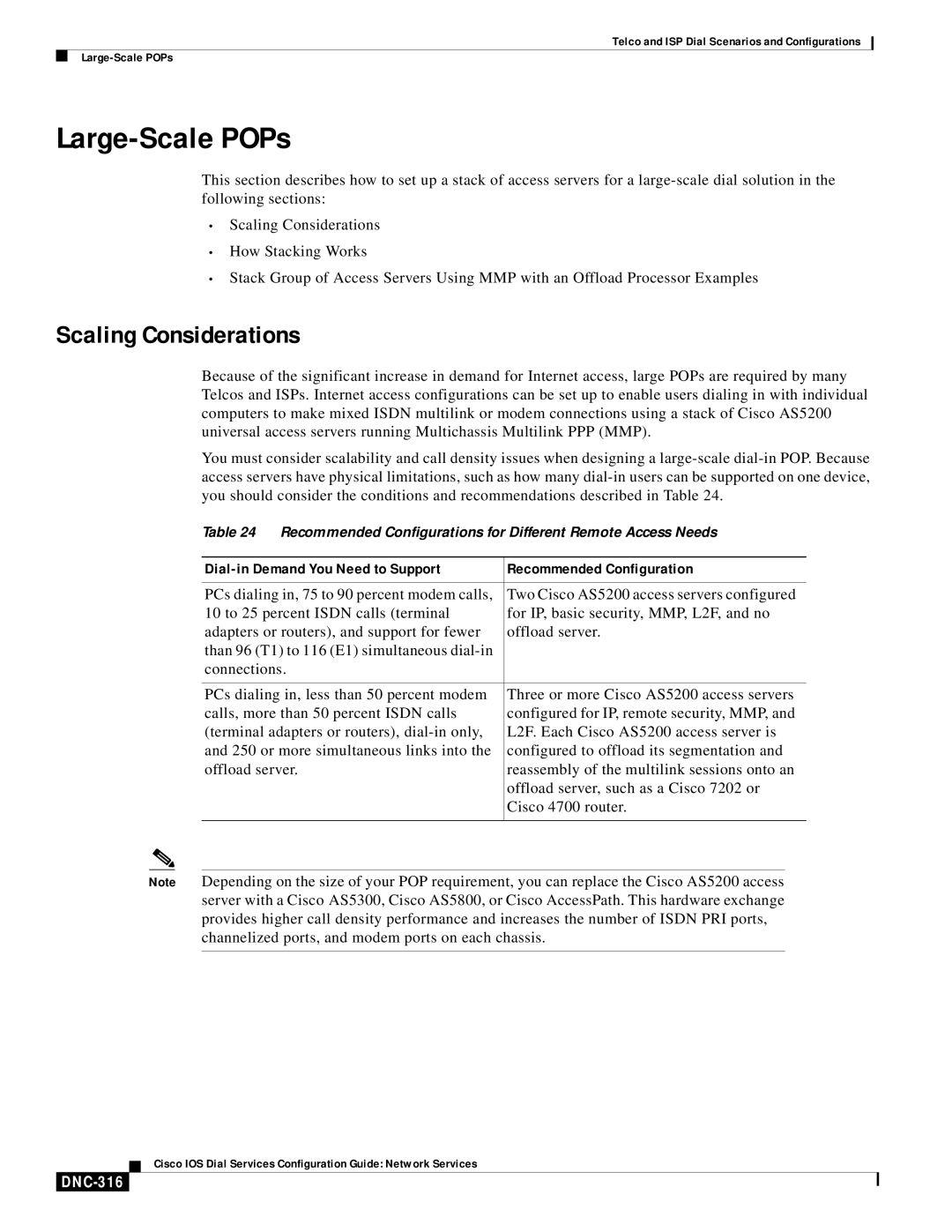
Telco and ISP Dial Scenarios and Configurations
Large-Scale POPs
This section describes how to set up a stack of access servers for a
•Scaling Considerations
•How Stacking Works
•Stack Group of Access Servers Using MMP with an Offload Processor Examples
Scaling Considerations
Because of the significant increase in demand for Internet access, large POPs are required by many Telcos and ISPs. Internet access configurations can be set up to enable users dialing in with individual computers to make mixed ISDN multilink or modem connections using a stack of Cisco AS5200 universal access servers running Multichassis Multilink PPP (MMP).
You must consider scalability and call density issues when designing a
Table 24 Recommended Configurations for Different Remote Access Needs
Recommended Configuration | |
|
|
PCs dialing in, 75 to 90 percent modem calls, | Two Cisco AS5200 access servers configured |
10 to 25 percent ISDN calls (terminal | for IP, basic security, MMP, L2F, and no |
adapters or routers), and support for fewer | offload server. |
than 96 (T1) to 116 (E1) simultaneous |
|
connections. |
|
|
|
PCs dialing in, less than 50 percent modem | Three or more Cisco AS5200 access servers |
calls, more than 50 percent ISDN calls | configured for IP, remote security, MMP, and |
(terminal adapters or routers), | L2F. Each Cisco AS5200 access server is |
and 250 or more simultaneous links into the | configured to offload its segmentation and |
offload server. | reassembly of the multilink sessions onto an |
| offload server, such as a Cisco 7202 or |
| Cisco 4700 router. |
|
|
Note Depending on the size of your POP requirement, you can replace the Cisco AS5200 access server with a Cisco AS5300, Cisco AS5800, or Cisco AccessPath. This hardware exchange provides higher call density performance and increases the number of ISDN PRI ports, channelized ports, and modem ports on each chassis.
Cisco IOS Dial Services Configuration Guide: Network Services
